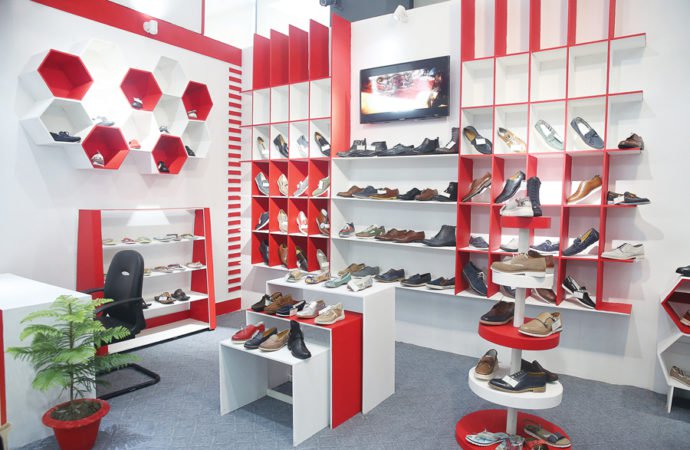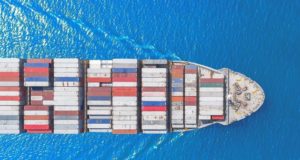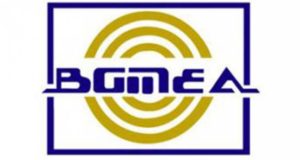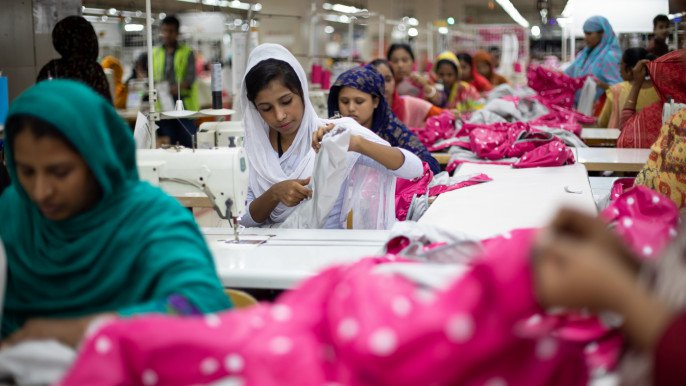Published in Dhaka Tribune on November 26, 2017

Photo: Syed Zakir Hossain/ Dhaka Tribune
Foreign buyers prefer Bangladesh because of lower wages. China is raising the workers’ wages and concentrating on IT and value added products
The leather industry has been struggling, despite the government declaring it as the “Product of the Year-2017”.
On January 1, Prime Minister Sheikh Hasina, while inaugurating Dhaka International Trade Fair, announced leather as the ‘Product of the Year’, saying the government wanted to boost the leather industry to it’s full potential.
But, because the tanneries had to move from Hazaribagh to Savar this year, they were unable to take advantage of the benefits that come with being the product of the year as they are still adjusting to their new location.
Will just a month left in the year, people involved with both tanning and finished leather products blamed a lack of compliance at Savar Leather Industrial Estate for not being able to take full advantage of the product of the year benefits and the lack of export earnings from leather goods.
According to Export Promotion Bureau (EPB), processed leather earned $232 million in the FY17, down by 16.30%, compared to $277.90 million over the same period in the previous fiscal year. In the FY15, it the export volume stood at $400 million.
“Buyers are not interested in processed leather from Bangladeshi tanneries because of non-compliance coupled with environmental and other issues as the Central Effluent Treatment Plant (CETP) and solid waste management at the new tannery estate is not being done properly,” said Md Shakawat Ullah, general secretary, Bangladesh Tanners Association (BTA).
“Though the government declared leather as the product of the year, the steps to make that a reality remains only on paper,” an industry insider, seeking anonymity, told the Dhaka Tribune.
“We did not even get land registration at the leather estate from the government. That is the reason we cannot get bank loans since we are cannot provide any documents supporting land registration to the banks,” he said.
Md Shakawat further said: “Road communication to and from Savar is also in a dismal state, weighing on the leather industry.
“We were assured of the number of orders for leather goods would rise that after shifting from Hazaribagh to Savar, but, that promise has not materialised as the new estate is not fully operational either.”
The current situation is adversely affecting stakeholders from reaching their target, he said, adding that the promises made by the authorities concerned in this regard has not been fulfilled yet.
He also said pollution on the estate premises continues because of the government’s negligence in completing the Central Effluent Treatment Plant (CETP), and dumping waste out in the open.
Total earnings from the leather and leather goods, is the second highest contributor to national exports after garment industry.
The industry has performed well, as per EPB data, in the last fiscal year, Bangladesh earned $1.23 billion from the leather sector, which is 6.29% higher compared to $1.16 billion in FY16.
Meanwhile, finished leather products earned $464.43 million in FY17, registering a 19.63% growth compared to $388.22 billion in the previous fiscal year.
Leather footwear fetched $536.96 million, the highest earner in the sector, which is 8.51% higher compared to $494.83 million a fiscal year ago.
“We have seen export growth but it is still not as high as we had expected. In attaining the $5 billion export target from the sector, the biggest impediment is unpredictability in tax rate as it hinders new investment. Long-term policy is another key element in attaining the goal,” said Abdul Momen Bhuiyan, deputy managing director of Apex Footwear Ltd.
Bangladesh is yet to make the most of the leather industry as the relocation to Savar failed to attract buyers. The CEPT set up at the leather estate is not state-of-the-art, said Momen, also senior vice president of Bangladesh Leather Goods and Footwear Manufacturers and Exporters Association.
“Every year, policy on tax or other tariff changes creating uncertainty among investors. That is why a long-term and flexible investment policy is a must.
“In order to ensure safety at the workplace, the government has allowed duty-free import of fire safety equipment only for the apparel industry. But, the provision should be equal for all the export-oriented industries,” he suggested.
When contacted, Commerce Minister Tofail Ahmed said the government is committed to remove all the barriers relating to the business sector.
“We have taken measures to materialise the premier’s declaration as the government is keen to promote a business-friendly environment,” he added.
Savar leather estate is still polluting the environment. Around 100 out of 155 tanneries are currently operating at the estate, while the rest are yet to start functioning.
Ever since the relocation, the tanneries continues polluting the industrial park as its CEPT overflows with liquid waste. While solid waste is being dumped out in the open.
“We have extended a deadline to June 30, 2019 to complete the relocation at the leather estate, revising the CETP capacity to contain the overflow,” said Industry Secretary Md Abdullah.
Several steps have been taken for solid waste management in the estate as well, he added.
The Ministry of Industry allocated plots, covering 200 acres of land, to 155 tannery owners at leather industrial park in Savar.
There are opportunities of the leather industry
Foreign buyers prefer Bangladesh because of lower wages. China is raising the workers’ wages and concentrating on IT and value added products.
Vietnam is also turning out to be expensive. So, there is an opportunity for Bangladesh to take advantage of the situation, said Abdul Momen Bhuiyan, deputy managing director of Apex Footwear Ltd
“India is Bangladesh’s competitor, but there are challenges on Good and Services Tax (GST) and tax on leather. There are also issues relating to slaughtering of cows in India,” said Momen.
“The leather industry is the second highest export earner but the gap between the RMG sector is huge. To reduce the gap, the government should reform its financial policy to bolster investment,” said M Abu Taher, chairman Fortuna Group, a leather products manufacturer.
RMG sector earns over $28 billion while leather sector makes $1.23 billion.
 CPD RMG Study Stitching a better future for Bangladesh
CPD RMG Study Stitching a better future for Bangladesh




